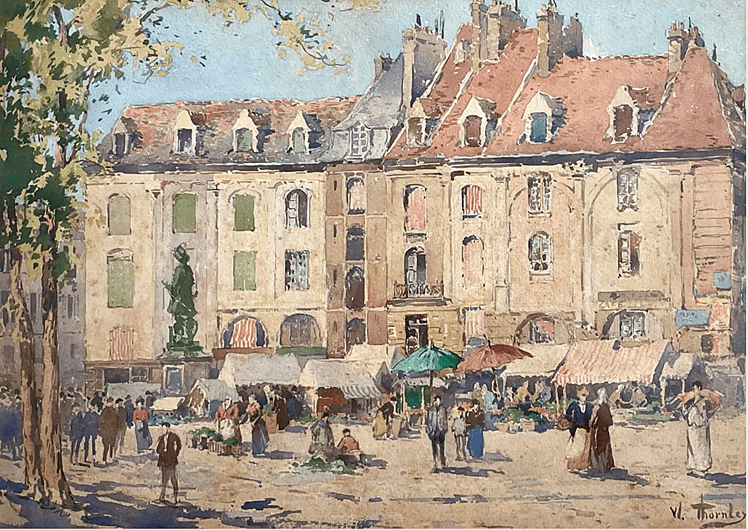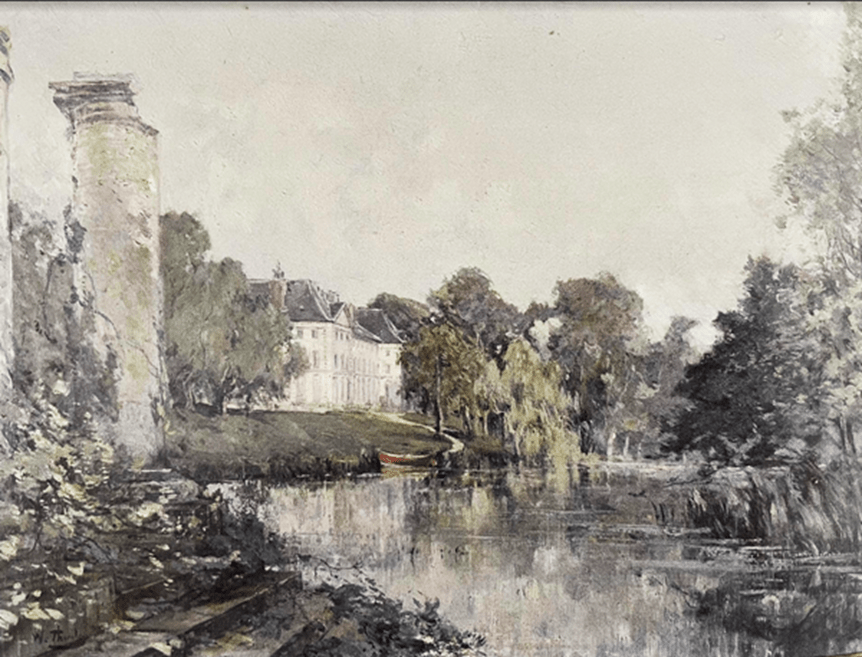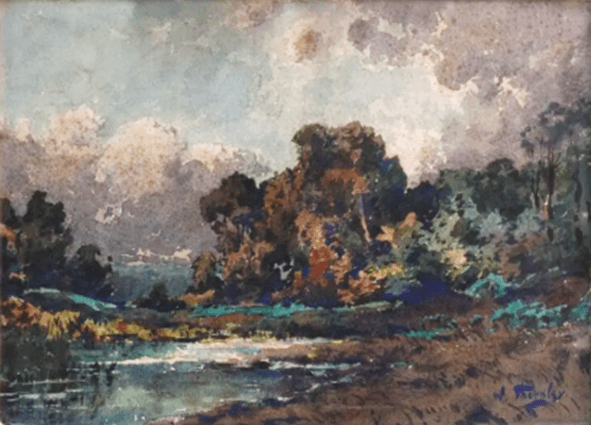Le marché. Après 1900 (Collection privée). Aquarelle signée en bas à droite (34,5 x 49 cm)
Après 1900 (1907 ?)
Cette aquarelle représente en réalité une scène de marché sur la Place Nationale à Dieppe. Elle est un précieux témoignage d’un passé révolu de la vieille Ville. « Le Journal », dans son édition du 28 novembre 1907, mentionne un voyage que le peintre aurait effectué cette année là en Normandie (Rouen et Dieppe). Le format de la signature et le style permettent de dater cette composition après 1900, et probablement en 1907 ou ultérieurement. On aperçoit, vue de dos en regardant de l’Eglise Saint-Jacques, une statue qui domine la place Nationale. Elle a été réalisée par Antoine Dantan (1798-1878) sculpteur dieppois en 1844, qui représente Abraham Duquesne, capitaine dieppois et huguenot, (1610 ? – 1688) posant, le regard porté vers la mer, en marin victorieux.
Elle a probablement servi de modèle à une lithographie en couleurs que William Thornley réalisa dans la foulée ou quelques années après (Voir la fiche F121 – Place Nationale à Dieppe). Il est à noter que William Thornley ne reproduisait pas strictement à l’identique les lithographies d’après modèles, mais s’en inspirait largement. Sa subtilité à cet égard à séduit en son temps ses amis Monet, Pissarro et Degas dont il sut traduire l’âme de leurs compositions d’une façon toute particulière.

The market. After 1900 (Private collection). Watercolor signed lower right (34.5 x 49 cm)
After 1900 (1907?)
This watercolor actually represents a market scene on the Place Nationale in Dieppe. It is a precious testimony to the bygone past of the old town. « Le Journal », in its edition of November 28, 1907, mentions a trip that the painter made that year to Normandy (Rouen and Dieppe). The format of the signature and the style allow us to date this composition after 1900, and probably in 1907 or later. We see, seen from the back looking from the Saint-Jacques Church, a statue which dominates the Place Nationale.It was created by Antoine Dantan (1798-1878), a Dieppe sculptor in 1844, which represents Abraham Duquesne, a Dieppe captain and Huguenot, (1610? – 1688) posing, looking out to sea, as a victorious sailor. It probably served as a model for a color lithograph that William Thornley produced immediately or a few years later (See sheet F121 – Place Nationale in Dieppe). It should be noted that William Thornley did not reproduce lithographs strictly identically from models, but was largely inspired by them. His subtlety in this regard seduced his friends Monet, Pissarro and Degas in his time, and he knew how to translate the soul of their composition in a very particular way.



